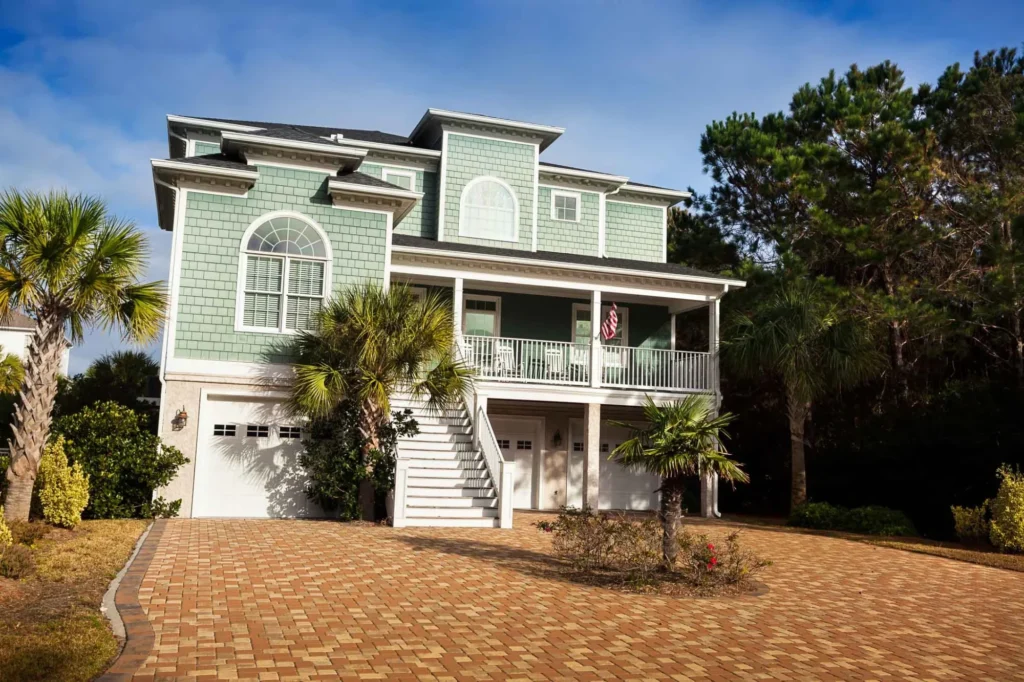
Wasp Control in St. George, SC
St. George, South Carolina, is classic small-town Lowcountry—deep porches, mature pecans and pines, barns and sheds that see daily use, and neighborhoods that back up to fields, tree lines, and creeks. Those same features make paper wasps, yellowjackets, and bald-faced hornets feel right at home. Long porch rafters along the in-town grid, tin-roof overhangs on carports and sheds, gaps where additions meet old siding, and quiet wind-shadowed soffits create perfect anchor points for nests. Add sandy soil that hides ground voids, warm afternoons even in shoulder seasons, and steady outdoor activity around cookouts and ball games, and colonies can establish quickly—from early spring through late fall—on properties across St. George and nearby Reevesville, Harleyville, Ridgeville, and Grover, as well as along US-78, US-15, and I-95.
If you’re seeing steady flight to one spot, hearing a faint hum in a soffit, or noticing papery material on a porch ceiling, it’s time to act. All U Need Pest Control delivers Wasp Control in St. George, SC that’s quick, discreet, and built for homes, farms, and small businesses—whether you’re near downtown, along country roads, or close to local parks and school facilities. We neutralize the colony, remove the nest, and fortify entry seams so rebuilding is unlikely. Our motto is simple: “If they’re not dead, we’re not done!” Call 1 (888) 239-BUGS for a free inspection.
Pest Control Services in St. George, SC
- Ant Control
- Bed Bug Control
- Beetle Control
- Cockroach Control
- Flea Control
- Home General Pest Control
- Hornet Control
- Millipede Control
- Mosquito Control
- Pantry Pest Control
- Rat & Rodent Control
- Scorpion Control
- Silverfish Control
- Spider Control
- Stink Bug Control
- Termite Control
- Tick Control
- Winter Control
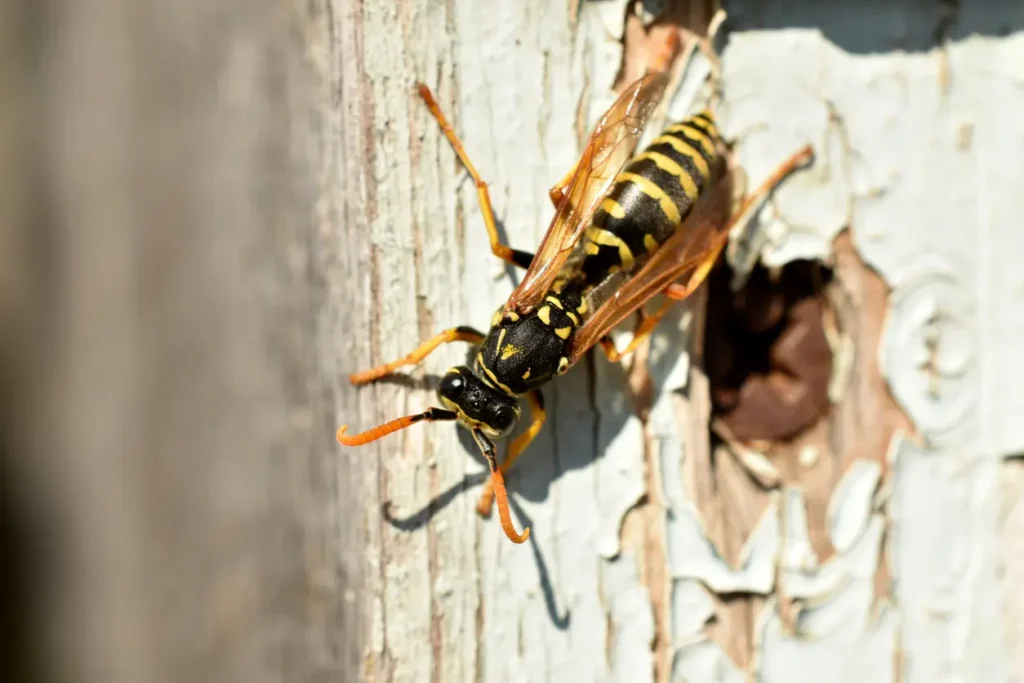
How To Get Rid of Wasps in St. George, SC
In St. George, spring warm-ups and summer storm cycles drive scouting and nest building. DIY sprays often look like a quick fix, but they can scatter foragers or push a colony deeper into a wall or soffit void—especially with yellowjackets. The reliable solution follows a clear sequence and addresses both the colony you can see and the conditions that attracted it. Our local program blends precise inspection with calm, methodical neutralization, complete nest removal, and seam-focused prevention, so the same spot isn’t rebuilt after the next warm afternoon or post-storm lull.
- We time service when activity is lowest (dawn/dusk) to maximize safety and ensure most foragers are home.
- We neutralize the colony before removing the nest—preventing dispersal into wall or attic voids.
- We treat anchor points and ingress gaps with precise, long-lasting placements to discourage immediate rebuilding.
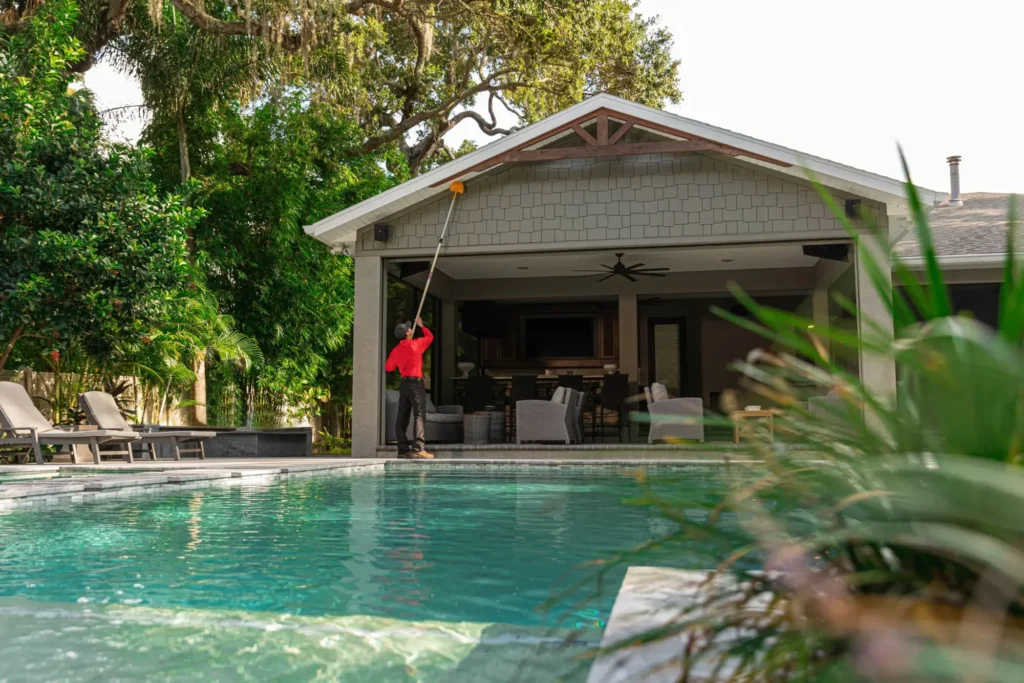
Wasp Treatment in St. George, SC
Every structure in St. George is a little different—a farmhouse with an open equipment shed behaves differently than a brick ranch on a quiet cul-de-sac, and both differ from a storefront off US-78. The right plan accounts for roof geometry, wind direction, shade, and nearby attractants (grills, recycling bins, fruiting trees, and kids’ play sets). We work with a tight footprint and low-odor approach, keeping daily life moving while we solve the problem.
Inspection
We start outside and work inward, tracing flight to eaves, soffits, porch rafters, pergola beams, play-set timbers, fence posts, meter boxes, and cable/HVAC penetrations. Around barns and sheds, we look under roof tin, rafter pockets, and beam junctions where paper wasps prefer to start umbrella-style combs. For properties near fields, ditches, and tree lines, we check ground voids in sandy soil, old burrows, and root hollows—favorite yellowjacket sites. On older houses, we inspect fascia returns and trim transitions where time and weather open hairline gaps. Inside, we listen for humming in dormers and bonus rooms and check attic transitions so void nests don’t surprise you later. You’ll see clear photos and a short plan before we begin—plain English, no lecture.
Nest Removal
Using professional PPE and application tools, we neutralize the colony and fully detach and bag the nest—paper wasps under porch ceilings or carports, bald-faced hornet “footballs” in pecans or pines, and yellowjackets entering fascia lines or ground holes. We remove papery residue at the anchor so pheromone cues don’t trigger instant rebuilding. For voids, we follow void-aware procedures that ensure complete collapse rather than driving insects deeper into walls or soffits. We never seal a live entrance; we neutralize first, then close and screen as needed.
Targeted Treatments
We place low-odor, professional formulations exactly where wasps travel: soffit and fascia seams; pergola beams; play-set brackets; lattice seams; crawl-door frames; and common ingress around utilities. After thunderstorms or windy fronts, we can revisit vulnerable seams by request to keep protection active. The focus is precision—no blanket fogging of living spaces—so family, pets, and livestock routines can continue with minimal interruption.
Exclusion
Prevention keeps porches and work areas comfortable. We screen attic/gable vents with pest-rated mesh that preserves airflow, close small soffit/fascia gaps, and seal cable/HVAC penetrations with metal mesh plus long-life sealant. On raised homes, we recommend crawl-door adjustments and sturdier lattice that still breathes but eliminates easy anchor lines. On barns and sheds, modest trim repairs and selective screening remove favorite start points while maintaining ventilation.
Integrated Pest Management (IPM)
IPM ties the pieces together. We monitor after storms, track flight activity, and adjust placements as pressure shifts through the long warm season. During community events like the World Grits Festival, backyard cookouts and street-side food smells can increase scouting; IPM helps us time follow-ups and harden entries around those peak windows. Along rural edges and pasture lines, mowing and brush-clearing can expose new anchor zones; we identify them before nests mature.
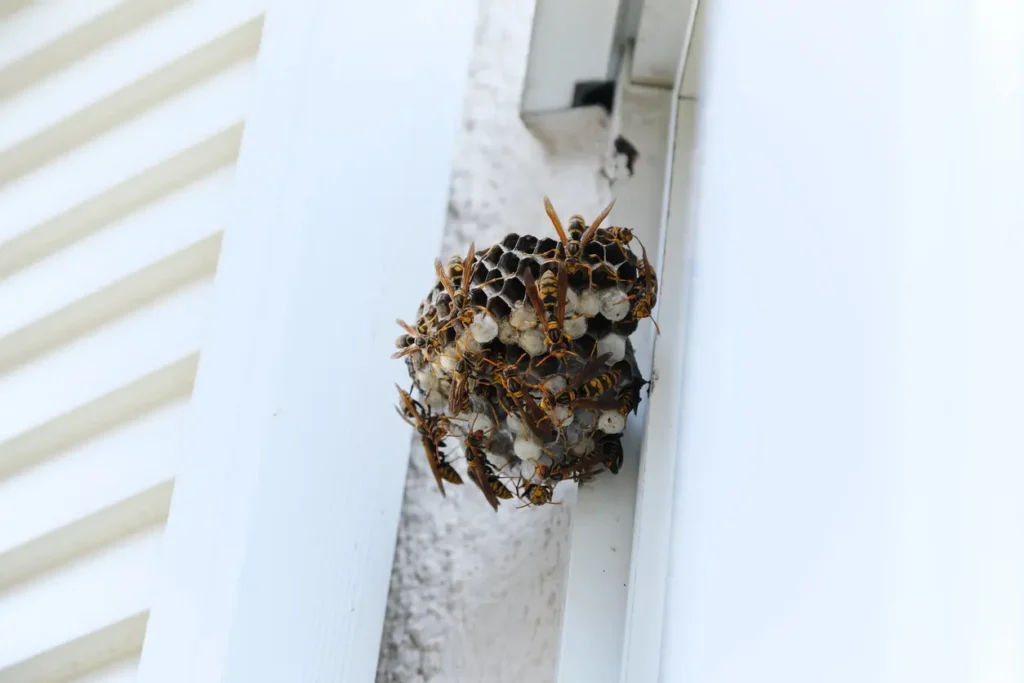
Signs of a Wasp Infestation in St. George, SC
You don’t have to get close to know you have a problem. Nests appear where people gather—porch seating, garden gates, pool fences, and play sets. If you’re seeing repeat traffic to one spot, it’s not random. Early action reduces sting risk and prevents colonies from maturing into late-summer defense mode.
Increased Wasp Activity
Expect repeated flight paths to a specific gap or beam, especially at dusk when scouts return. Paper wasps hover beneath rafters on long porches; yellowjackets fly straight to a wall or ground opening and vanish. Around grills, bins, and outdoor sinks, activity often spikes after weekend gatherings. In rural yards, steady movement to a particular fence post or irrigation box is a common tell.
A Visible Nest on Your Property
Paper wasp nests are open combs with hexagonal cells, hanging like umbrellas beneath porch ceilings, carports, shed rafters, and pergola beams. Bald-faced hornet nests are enclosed, gray, and “football-shaped,” usually higher in trees or at gables where foot traffic is light. Yellowjackets may be invisible until you see fast in-and-out traffic at a tiny soffit crack, fascia return, or ground hole near fencerows—reliable traffic is your confirmation.
Wasps Inside Your Home
Regular indoor sightings (especially near skylights or upstairs windows) can mean a void nest has found a light channel. A faint buzz in a soffit or wall cavity, notably near dormers and additions, deserves immediate attention. Skip the tape and bug spray—pressure can push insects into living spaces. Professional neutralization resolves the entrance and the source, not just the stray fliers.
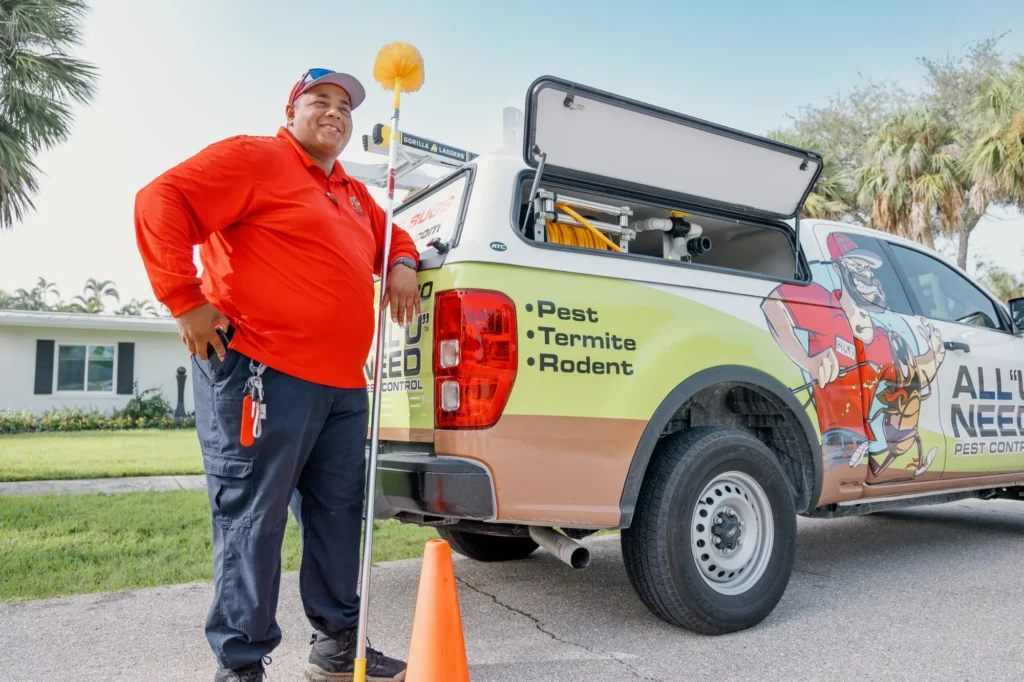
How To Check for Wasps
Observation beats confrontation. Choose cooler times of day when flight is slower—early morning or near dusk. Stand back, watch quietly, and note patterns rather than chasing individual insects. The goal is to identify a single, reliable entrance or anchoring surface so professionals can resolve it safely and completely.
- Watch for repeated entry into a particular gap, soffit edge, porch beam, or vine-covered wall.
- Scan shrubs, small trees, pergolas, barns, and play sets for papery structures.
- Listen for humming in wall or ceiling cavities, especially along porch roofs, dormers, and bonus-room transitions.
If you suspect a high or hidden nest, don’t seal, flood, or knock it down. We neutralize the colony first, then complete repairs or screening so the problem doesn’t migrate indoors or to a new void.
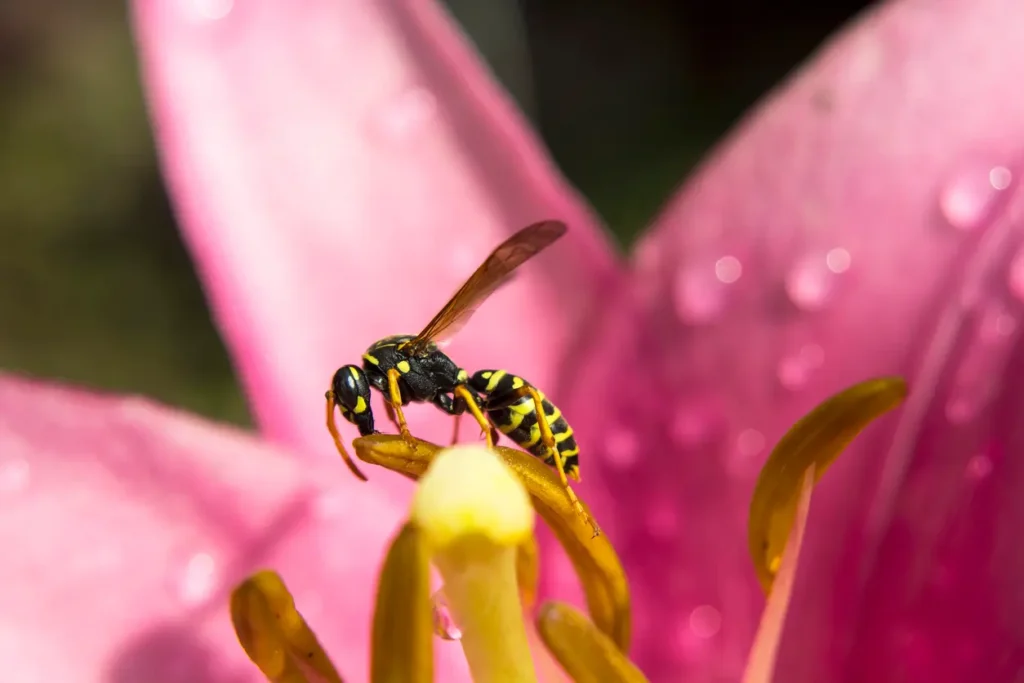
What Do Wasps Look Like in St. George, SC?
St. George properties host several wasp and hornet species. Correct identification shapes the safest removal method and the most effective prevention. While many residents simply say “wasps,” paper wasps, yellowjackets, and bald-faced hornets behave differently—and those differences matter, especially when nests occupy wall or soffit voids.
Paper Wasps
Slender, long-legged, tan-to-dark insects with yellow or reddish markings. They suspend open, umbrella-style combs from rafters, beam undersides, carport roof lines, and soffit interiors. They defend at close range, especially once brood is present. Control focuses on neutralization, complete removal, anchor treatment, and tightening nearby seams so the area no longer feels “quiet and safe.”
Yellowjackets
Compact black-and-yellow wasps nesting in ground voids or wall/fascia cavities. Highly defensive and capable of multiple stings. In older homes, they exploit hairline cracks at fascia returns or sill lines; on farms and rural lots, they use old burrows, root holes, and irrigation voids. Neutralization must reach the entire colony—surface sprays rarely work and often make matters worse.
Bald-Faced Hornets
Large, black with white facial markings. Their enclosed gray nests hang in trees or on structures and can be hidden in canopy around yards, fence lines, or field edges. They respond strongly to disturbance—mowing, trimming, or ball play can trigger fast defense—so we stage neutralization carefully, detach fully, and treat the anchor zone to prevent immediate re-anchoring.
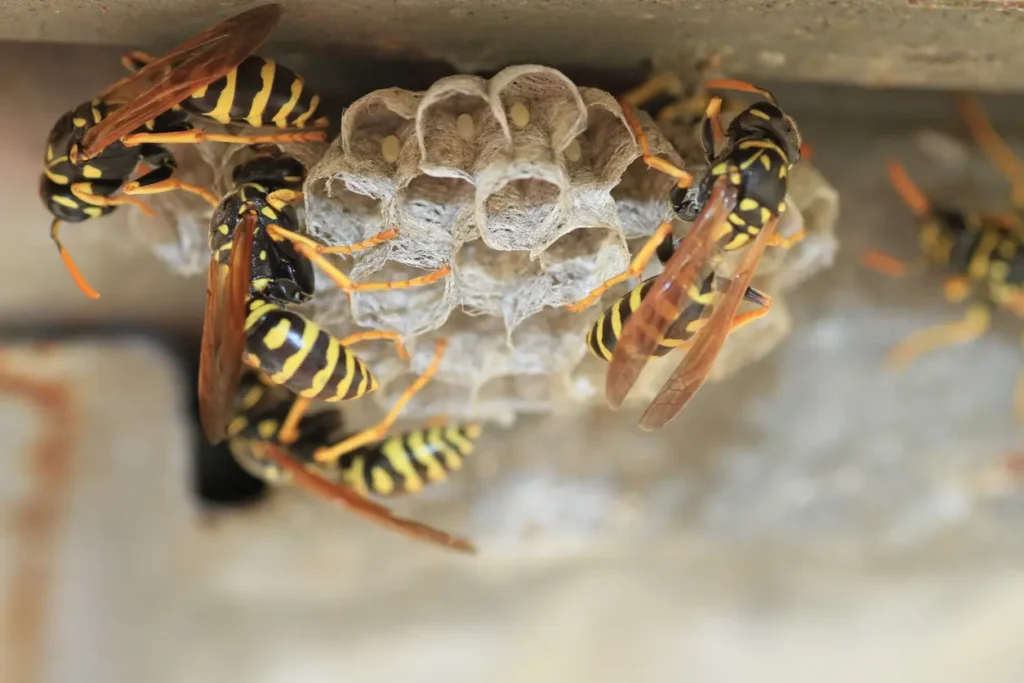
Eco-Friendly Solutions
We build wasp control that uses the least product necessary and puts it only where it delivers the greatest impact. Durable results start with removal and exclusion; the right placements extend protection without turning porches or barns into “spray zones.”
Natural Repellents
Botanical-based formulations can discourage scouting and anchoring on beams and trim. These are supplements, not substitutes, for proper neutralization and nest removal. They’re most helpful on chronic scouting lines—porch rafters, pergola beams, and carport edges that see repeat fly-bys.
Exclusion
Screen attic/gable vents with pest-rated mesh that preserves airflow through hot stretches. Close small soffit/fascia gaps, especially where old trim meets newer additions. Seal cable and HVAC penetrations with metal mesh plus long-life sealant. On raised homes, tune crawl-door latches and upgrade lattice so it still breathes but doesn’t offer convenient anchor ridges.
Habitat Modification
Relocate sticky recycling away from doors and seating, clean grills and prep tables after cookouts, and switch to warmer-spectrum porch bulbs to reduce nighttime insect draw—the fewer insects at lights, the less reason scouts have to linger. Thin shrub interiors and lift low branches so breeze and light disturb hiding spots near seating, play areas, and gates.
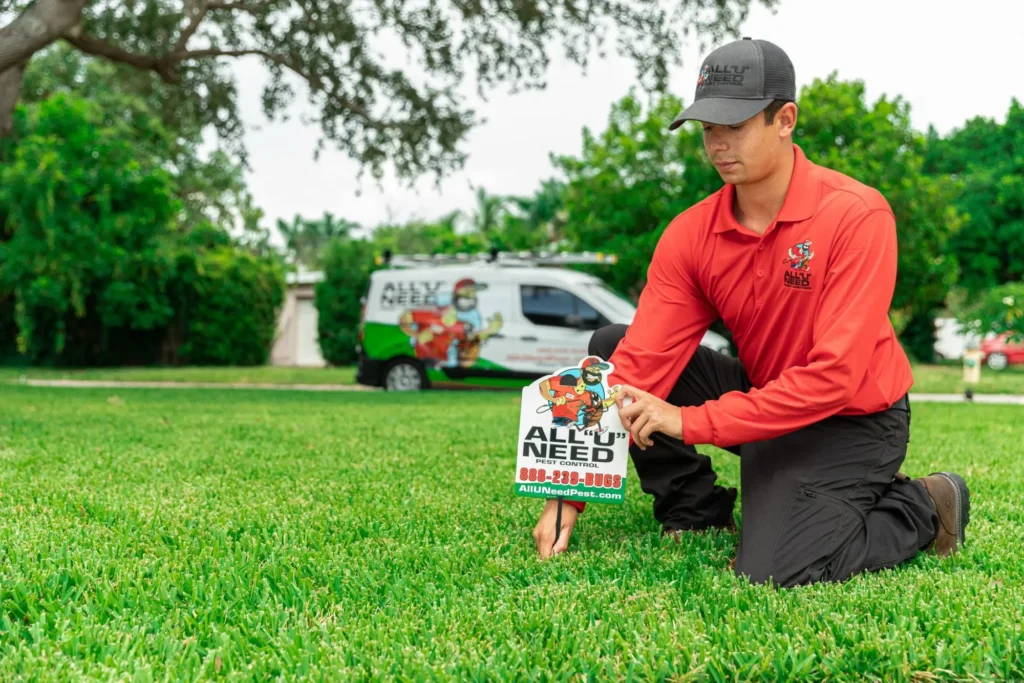
How To Prevent Wasps in St. George, SC
Prevention is simple when you focus on anchoring, attractants, and access. Anchor control removes surfaces and seams that encourage combs. Attractant control reduces the food odors and insect draw that bring scouts to your porch or shed. Access control closes structural gaps so void nests can’t begin in the first place.
Reduce Outdoor Clutter
Stacked planters, stored lumber, and gear against walls create dark corners where scouts can build undisturbed. Pull items a foot or two off siding and keep carports and sheds visible from seating areas. Wasps prefer quiet, shaded edges; a tidy, well-lit perimeter is less inviting.
Trim Vegetation
Prune hedges away from walls, lift low branches, and open vine-covered trellises near porches and pergolas. On rural lots, break up long hedge runs that create wind-shadowed seams—paper wasps love those calm bands beneath the eave line. A little airflow goes a long way toward prevention.
Get Rid of Food Waste
Rinse bottles and cans, bag trash tightly, and clean bin lids. Move bins away from doors and outdoor seating. During festival weekends, cookouts, and tailgates, assign a last-pass cleanup to remove sweet residues before dusk so scouts don’t concentrate near gathering spots.
Seal Trash Cans
Use tight-fitting lids and keep rims clean. If bins must stay near the house or shop, place them where they’re bright and visible rather than in a shaded nook that doubles as a wind break and anchor zone.
Cover Holes in Your Lawn
After a professional neutralizes any active colony, fill old burrows, root voids, and irrigation holes that invite yellowjackets. Mark any new hole that shows steady traffic and call promptly—neutralize first, then restore safely so the nest doesn’t relocate into siding or outbuildings.
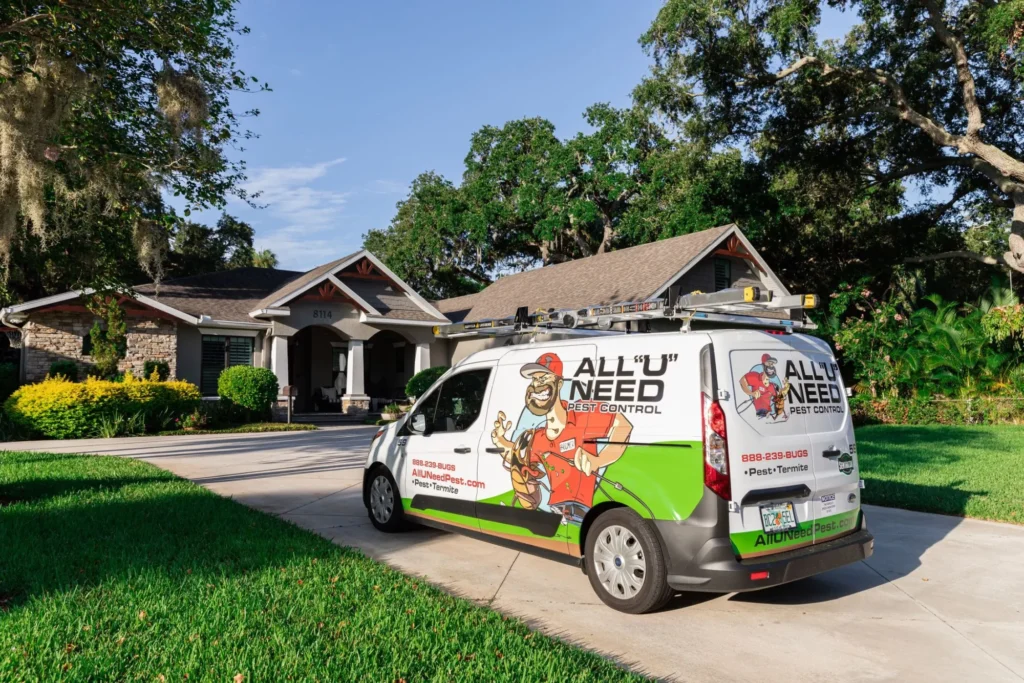
Why Choose All U Need Pest Control for Wasp Control in St. George, SC?
Local nuance improves results. Our technicians work St. George and surrounding Dorchester County communities every day and understand how wind, shade, and structure type shift nesting sites—from deep porch rafters to barn eaves, field-edge trees, and soffit laps on the leeward side of older homes. You get a plan that’s local, precise, and proven—designed for your materials and the way our weather behaves. We arrive in a tight window, document findings with photos, neutralize and remove the colony (not just “knock it down”), and tighten the seams so rebuilding is rare. If activity returns during the guarantee window, we return promptly—no runaround.
We proudly serve St. George, Reevesville, Harleyville, Ridgeville, Grover, and nearby areas along US-78, US-15, and I-95. Ready to reclaim your porch, yard, and work areas? Call 1 (888) 239-BUGS or request your free inspection online. We’ll inspect, remove, and protect—so you can enjoy Lowcountry life, festivals, and family gatherings without the stings.
Location Contact:
419 N Cedar St Summerville, SC 29483
Get Directions for 419 N Cedar StSummerville, SC 29483 on Google Maps843-489-8818
Call All "U" Need Pest Control